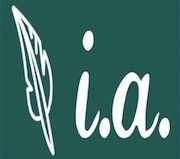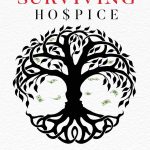A Chaplain’s Journey Into the Business of Dying How to Find a Trustworthy
Provider
Nonfiction / Medical
Date Published: October 9, 2023
Publisher: MindStir Media
Maryclaire Torinus invites you to join her at the bedsides of dying patients. Her enlightenment becomes your learning as each chapter unfolds. Her admiration for hospice helps her see its darker side. Her list of
interview questions for those seeking good, community-oriented hospice is a valuable tool.
Larry Patten, Retired United Methodist Minister, Hospice Chaplain, author of “A Companion for the Hospice Journey.
Maryclaire Torinus received certification in Clinical Pastoral Education for Chaplaincy at St. Camillus Senior Living Residence. She worked as a hospice chaplain and as a hospice consumer advocate for eight years. She
also worked for two years as a pastoral counselor in an acute-care wing of the Milwaukee County Behavioral Health Complex. Maryclaire is a Wisconsin native and met her husband, Mark, in the fifth grade. She and Mark were
married for 37 years until he died in 2013. They have three children and three grandchildren.
Praise for Surviving Hospice
Powerful, beautifully written, and eye-opening, this book spotlights the inner workings of a multi-billion-dollar industry and the effect on
patients, families, and hospice staff. The author shares poignant accounts of hospice at its best and worst and the hard-hitting truths she learned on her journey. A must-read for family members exploring hospice care.
Stacy Juba, author, editor, and award-winning health journalist
Maryclaire Torinus speaks with authority, providing this essential handbook for choosing a hospice care team and why that selection really matters.
Laura Kukowski, CEO For-Profit Badger Hospice, LLC
EXCERPT
Foreword
I first met Maryclaire Torinus after coming across her website and learning about her work as a hospice chaplain. She was writing a book about the harm caused by the changing business structure of the hospice industry. My experience with for-profit hospices was as a volunteer, and as the founder and president of the Hospice Volunteer Association (HVA), I had also witnessed a decline in the quality of care from several different perspectives. And what was most troubling was that so much of it seemed directly related to the rising number of for-profit hospices (while nonprofit hospices were decreasing.)
Over time, I have seen my role as a volunteer becoming more limited due to increased regulation driven by the recommendations of corporate lawyers. In early 2008, our association saw an urgent need for the Health Insurance Portability and Accountability Act (HIPAA) for volunteer programs. So, I developed the Patient Data Vault (PDV) software that hospices use to manage their volunteer programs and facilitate reporting that is HIPAA-compliant and meets Medicare requirements.
The most concerning aspect of that restrictive regulation was the premise by corporate lawyers that hospice volunteers should not be permitted to document what occurred during their patient visits. Consequently, the volunteer was only allowed to check generic boxes as to the type of service that was provided, but they could not describe what the patient may have conveyed to them during the appointment for fear of a lawsuit.
As the software began to get greater use in the hospice community, I observed that some hospices were restricting volunteers access to patient data. Zealous administrators and lawyers have created a double standard between volunteers and clinical staff when it comes to providing information that would allow volunteers to best serve the patients. The claim was that it was necessary for HIPAA compliance; however, HIPAA law specifically states that compliance should not sacrifice the quality of care for patients.
Such restrictions imposed on patient data is contrary to the congressional mandate that hospice volunteers are an integral part of the hospice’s Interdisciplinary Team (IDT). When Congress established the Medicare Hospice Benefit in 1982, it stipulated that the Conditions of Participation (CoPs) mandated that volunteers must provide administrative or direct patient care in an amount that, at a minimum, equals 5 percent of the total patient care hours expended by all paid hospice employees and contract staff.
Unfortunately, the use of volunteers declined 45 percent, as reflected by the 5 percent metric, from 9.4 percent in 2003 to 5.2 percent in 2014. Coincidentally, the number of for-profit hospices increased by 44 percent over that same period. This is a logical correlation given that for-profit hospices are more likely to target the minimum 5 percent requirement even though a higher target would increase their overall staffing and raise the quality of care at virtually no additional cost.
It’s important to note that volunteers were the driving force behind the grassroots establishment of the concept of hospice when it first started. As well, the growing awareness of how hospitals were treating the dying in the mid-70s inspired idealistic nurses, clergy, and volunteers to come forward and help launch hospice as a necessary health care reform. In the 1980s, the concept of hospice care began to resonate with the public and inspired lay people and healthcare professionals alike to place themselves at the disposal of nonprofit hospice providers even though they had just finished eight hour shifts at their own jobs
Fast forward thirty years to witness the dramatic changes we observe in the hospice industry today. The end-of-life care environment has transitioned from hospice organizations which began as nonprofit providers and driven by the altruism of lay volunteers to a substantial financial enterprise that is driven by big profit margins.
The unfortunate result of this transition has directly impacted patients and families. I’m not surprised by what Maryclaire observed in her own for-profit company and I agree with what she has shared in this illuminating book: there are less resources available to serve patient needs, less hospice staff to cover the census and provide for the quality and time patients deserve, a reduction in personal fulfillment by employees, and many seasoned and caring professionals are leaving for-profit hospices because the type of care they once provided is no longer possible.
The resources provided in part two of Surviving Hospice: A Chaplain’s Journey into the Business of Dying will help consumers make informed decisions for the critical choice that patients and their families have for selecting a hospice and ensuring a shot at having a good dying experience. There are no “do-overs” in this business.
Maryclaire Torinus beautifully weaves her own life story with her experiences as a hospice insider who cared for her dying patients until the last moments of their lives. The economic discoveries she makes on her spiritual journey that affected the well-being of her patients and the staff will help you to understand the important nuances associated with assessing and selecting the best hospice for you, whether it be nonprofit or for-profit.
The extremely useful interview tools will guide you step-by-step on how to search for crucial hospice information like a pro; and in the process, clear up why “all hospices are not the same.”
Greg Schneider Founder & President, Hospice Volunteer Association
Founding Director & CEO/CTO, Hospice Educators Affirming
Life (HEAL) Project
About the Author
I am intellectual, contemplative, and intuitive. I resonate deeply with the writing and theological teachings of Franciscan Friar Richard Rohr and am a One on the Enneagram Spiritual Inventory. I recently converted from Roman Catholicism to Episcopalian and I am an active member of St. Mark’s Church in Milwaukee. My colleagues have told me that I am a bridge-maker and an agent for change and spiritual growth. I am a lover of water with a
passion for kayaking.
I think it’s important to take healthy (informed) risks in life, which is why I am writing this book. During my years of study in the field of music, I’ve grown to love the vocal polyphony of the Renaissance period, Broadway musicals, and the film scores composed by John Williams (Schindler’s List and E.T.) My favorite performing experiences have been in Europe, Carnegie Hall, semi-professional theater roles, and touring with my college vocal jazz ensemble.
After more than 35 years of marriage I lost my husband and best friend to heart failure. I am a mom to three millennials and am a nana to three grandchildren and three cats.
My love of travel began when I studied abroad for a year in W. Berlin, Germany during the height of the Cold War; where I was profoundly affected by the history, culture, post-war politics, and ghastly Soviet-built wall. It was my first experience living amidst suffering.
Favorite memories over the years include riding a sweaty, stumbling horse for 6 hours into the Bob Marshall Wilderness to fly-fish, camp, and raft; hoofing up “The Great Wall” of China for three hours in a
torrent of rain and wind; and cross-country skiing with my husband into a Colorado valley; lit only by the moon and our head lamps.
My Bachelor Degree is in Vocal Music Education from St. Norbert College. My Master’s degree is in Religious Studies from Cardinal Stritch University. I trained in Clinical Pastoral Education for Chaplaincy at St.
Camillus Skilled Nursing Facility in Milwaukee, Wisconsin. I was humbled to receive the Heart of Compassion Award in 2012, as one of the top chaplains in the nation for my company. I studied at the Writers Institute at UW
Madison, The Clearing Folk School in Door County, and Red Oak Writing Studio.
My career in pastoral ministry culminated in my position as a full-time Hospice Chaplain at the same time that my husband was dying. Having also endured a serious clinical depression in my early fifties, my combined
personal and professional experiences offered a peculiar benefit for my work in Hospice – where holding a certain comfort level with suffering and loss was imperative.
I have worked in the fields of education, hospice chaplaincy, and eldercare for almost 30 years. My chaplain ministry has afforded many opportunities to speak at funerals, conduct workshops on the industry of hospice, and teach
on the Spirituality of Aging.
From this experience, I am offering my knowledge with the mission of helping consumers navigate hospice services.
Contact Links
Purchase Links

